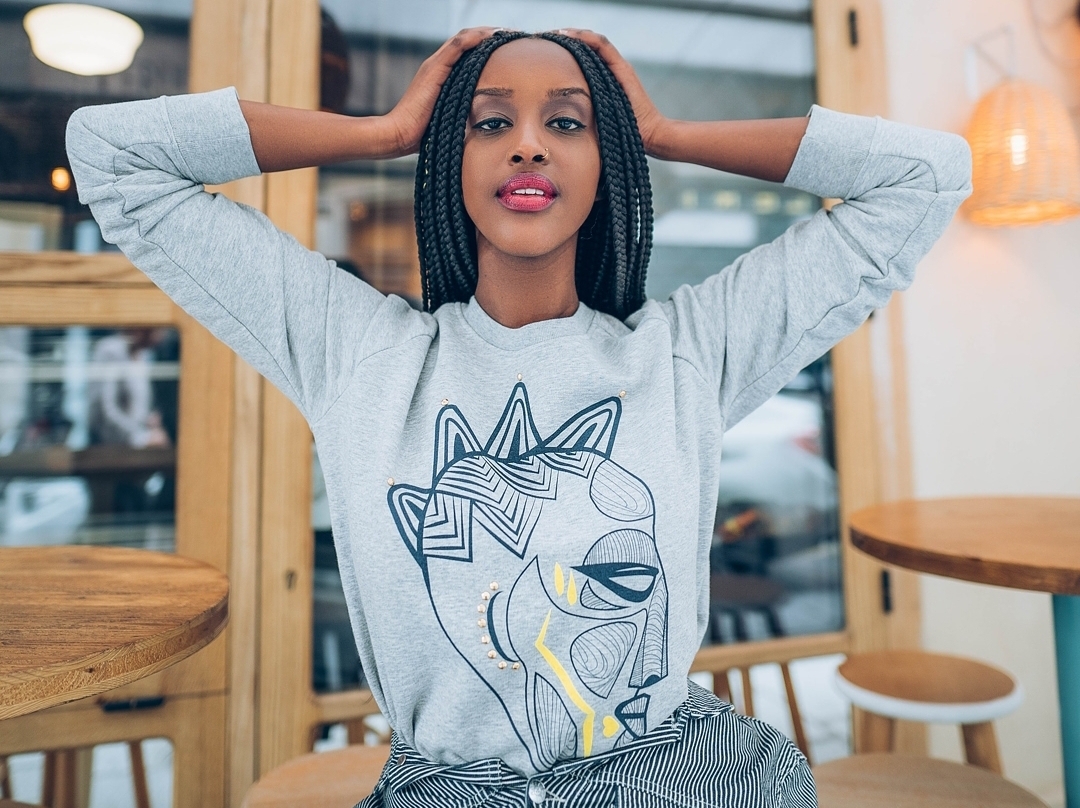Branded Clothing for Travel: Wrinkle-Resistant Fabrics That Perform
The Importance of Lasting Garments: Exactly How It Affects the Atmosphere and Your Closet
Sustainable clothing is progressively acknowledged for its vital role in reducing the environmental influence of the rapid fashion business. By concentrating on green products and honest manufacturing techniques, it addresses pushing eco-friendly issues. This change not only benefits the world however also influences customer options, leading to an extra thoughtful technique to closet monitoring. Recognizing these characteristics raises crucial questions about style's future and personal duty in forming it.
The Ecological Footprint of Fast Style

Advantages of Sustainable Products
Lasting materials supply substantial benefits, especially with eco-friendly material choices that decrease ecological damage. These materials also demonstrate toughness and durability, reducing the demand for regular substitutes. Consequently, they add to a more sustainable fashion sector and advertise liable consumer behavior.
Eco-Friendly Textile Selections
While the apparel industry has actually long been related to fast trends and ecological harm, the rise of environmentally friendly fabric choices provides a transformative possibility. Lasting materials such as organic cotton, hemp, and Tencel have gotten popularity because of their reduced environmental impact. These materials are frequently created without dangerous chemicals and call for less water, minimizing their carbon impact - Branded Clothing. Additionally, several environment-friendly materials are eco-friendly, adding to a round economic climate by minimizing waste. Choosing sustainable products not just sustains environmentally accountable methods but additionally promotes much healthier ecological communities. As consumers become much more familiar with their purchasing power, the demand for green materials motivates brand names to innovate and take on more sustainable production methods, eventually benefiting the world and future generations
Toughness and Longevity Benefits
Many consumers are progressively recognizing the durability and durability advantages of lasting products in their apparel choices. Unlike standard materials, lasting products such as natural cotton, hemp, and recycled polyester are engineered to endure deterioration, resulting in garments that last much longer. This reduced regularity of replacement not just saves customers money gradually however also reduces waste produced by quick fashion. Furthermore, sustainable apparel frequently utilizes environmentally friendly manufacturing techniques that enhance material strength, adding to a reduction in the general carbon impact. By purchasing long lasting clothes, customers can grow an extra sustainable wardrobe while delighting in high-grade items that keep their visual and performance in time. Subsequently, resilience and longevity stand as key benefits of choosing sustainable materials.
Lowering Waste Through Sustainable Practices
Decreasing waste in the apparel industry can be attained through innovative methods such as upcycling and repurposing products. In addition, taking on minimal closet approaches motivates customers to prioritize quality over quantity, inevitably reducing clothes intake. With each other, these strategies contribute substantially to a much more lasting clothing version.
Upcycling and Repurposing Materials
Upcycling and repurposing products have actually arised as cutting-edge approaches in the fashion market, changing discarded fabrics right into useful brand-new products. This method not just reduces waste but also urges creativity and uniqueness in apparel layout. By taking old garments and materials, designers can create one-of-a-kind pieces that show individual design while minimizing the need for brand-new resources. In addition, upcycling typically calls for much less power and water compared to typical manufacturing processes, significantly lowering the ecological footprint of style. As consumers become extra knowledgeable about sustainability, the appeal of upcycled clothes remains to rise, promoting a circular economic situation. Eventually, these methods add to a more sustainable future, where fashion focuses on ecological health over fast manufacturing and intake.

Minimalist Closet Techniques
As individuals significantly look for to minimize their environmental impact, adopting minimal wardrobe techniques has actually gained traction as a reliable method to lasting style. These techniques emphasize top quality over quantity, motivating consumers to curate a smaller sized collection of functional, sturdy apparel. By focusing on classic pieces that can be mixed and matched, individuals can decrease the frequency of acquisitions and eventually lower waste.Additionally, minimalism advertises mindful consumption, advising consumers to assess the ecological and moral effects of their selections. This method not only cultivates a more lasting way of living however likewise simplifies daily decision-making regarding outfit. As individuals welcome minimalist concepts, they add to a style culture that values sustainability and responsible consumerism, inevitably bring about a much more eco-conscious society.
The Function of Honest Labor in Lasting Fashion
While many customers are progressively familiar with the environmental effects of their apparel selections, the relevance of honest labor methods in lasting fashion can not be ignored. Ethical labor includes fair wages, safe working conditions, and regard for workers' legal rights, creating the foundation of accountable fashion production. Brands that prioritize ethical labor not only boost neighborhoods yet likewise set a criterion for accountability in the industry.Moreover, the combination of moral techniques promotes transparency, enabling customers to make informed selections about their purchases. This practice contrasts dramatically with fast style's unscrupulous labor designs, which usually prioritize revenue over individuals. By supporting firms dedicated to ethical labor, customers contribute to a system that values human self-respect together with environmental sustainability. Ethical labor is not just an add-on; it is essential to the more comprehensive goal of lasting style, making sure that the pursuit for eco-friendliness does not come at the expense of human rights.
The Impact of Sustainable Apparel on Carbon Emissions
Sustainable clothing has the possible to considerably decrease carbon emissions related to the garment industry. Conventional garment production contributes especially to greenhouse gas emissions, largely due to energy-intensive production procedures and the use of non-renewable sources. In contrast, lasting fashion concentrates on environmentally friendly products, such as organic cotton or recycled fibers, which usually require view it less power to produce.Moreover, lasting brand names tend to adopt much more efficient manufacturing techniques, minimizing waste and decreasing general exhausts. By prioritizing resilience and classic design, lasting garments urges customers to acquire much less regularly, more lowering the carbon footprint connected with overconsumption.Additionally, several sustainable brand names are devoted to openness in their supply chains, enabling consumers to make informed choices that straighten with their values. Inevitably, changing towards sustainable garments can result in a considerable decrease in carbon emissions, adding to a healthier earth and a more lasting future for the apparel industry.
Supporting Regional Economies With Lasting Choices
The change toward lasting clothes not only addresses ecological concerns however likewise considerably benefits regional economies. By selecting sustainable fashion, consumers often sustain neighborhood craftsmens and little organizations, improving area strength. These ventures typically operate a smaller scale, prioritizing craftsmanship and honest practices over mass production.Investing in locally made sustainable apparel cultivates work development and boosts economic growth within neighborhoods. As consumers end up being a lot more knowledgeable about the ecological impact of their purchases, they increasingly choose products that reflect their worths. This need encourages local producers to embrace sustainable practices, contributing to a circular economy.Moreover, sustaining neighborhood companies reduces transportation discharges, straightening with eco-conscious consumer habits. The interconnectedness of sustainable garments and neighborhood economic climates underscores the essential role that private selections play in advertising both environmental and economic wellness. about his By fostering these regional links, areas can flourish while additionally functioning in the direction of an extra sustainable future.
Changing Your Wardrobe: Tips for a Lasting Closet
As people look for to decrease their ecological effect, changing a storage room right into a lasting wardrobe becomes a crucial step. One effective method is to evaluate existing apparel, maintaining just things that are used frequently which straighten with sustainability objectives. Focusing on top quality over quantity is crucial; buying durable pieces from green brands can greatly reduce waste.Additionally, integrating used things can breathe new life into a closet while reducing ecological damage. Organizing apparel swaps with pals or giving away unused things can better advertise sustainability.When purchasing, people ought to look for products that are natural, recycled, or naturally degradable, and stay clear of fast fashion sellers - Branded Clothing. Exercising mindful consumption by attentively thinking about each acquisition can contribute to a much more lasting way of living. By applying these suggestions, one can produce a wardrobe that shows personal design while supporting ecological stewardship
Often Asked Concerns
Exactly How Can I Determine Lasting Clothes Brands?
To determine lasting clothing brand names, one must look into materials utilized, look for certifications like Fair Trade, and take a look at the brand's openness about their production processes, labor techniques, and environmental impact, making sure ethical and environmentally friendly techniques are prioritized.
What Are the Costs Associated With Lasting Fashion?
The expenses related to sustainable fashion can vary significantly. Greater production expenses, honest sourcing, and environmentally friendly materials frequently lead to raised list prices, which may deter some customers while attracting environmentally conscious shoppers.
Can Lasting Clothes Be Fashionable and trendy?
Sustainable clothes can certainly be trendy and fashionable. Designers increasingly focus on ingenious materials and ethical production techniques, showing that style and sustainability can exist together. Consumers now have varied alternatives that blend aesthetics with ecological consciousness.
Just How Does Laundering Clothing Affect Their Sustainability?
Cleaning clothing considerably effects sustainability by consuming water and energy, adding to pollution, and causing microplastic launch. Regular washing can degrade materials, shortening their life-span and enhancing the requirement for replacements, ultimately worsening environmental issues.
What Is the Lifespan of Lasting Apparel Contrasted to Quick Style?
The life expectancy of sustainable garments normally goes beyond that of fast style things, internet usually enduring several years due to quality products and workmanship. On the other hand, rapid style garments may weaken quickly, necessitating more regular substitutes. Lasting clothing is progressively identified for its essential function in decreasing the ecological impact of the quick fashion industry. While several customers are significantly conscious of the environmental repercussions of their garments choices, the significance of moral labor practices in sustainable fashion can not be forgotten. Branded Clothing. Lasting apparel has the possible to greatly decrease carbon discharges linked with the style market. In contrast, lasting fashion concentrates on eco-friendly products, such as natural cotton or recycled fibers, which usually require much less energy to produce.Moreover, lasting brands have a tendency to adopt much more reliable production practices, decreasing waste and decreasing total exhausts. By prioritizing longevity and timeless design, sustainable garments motivates customers to get less often, more decreasing the carbon impact associated with overconsumption.Additionally, many lasting brand names are dedicated to transparency in their supply chains, allowing customers to make educated choices that line up with their worths